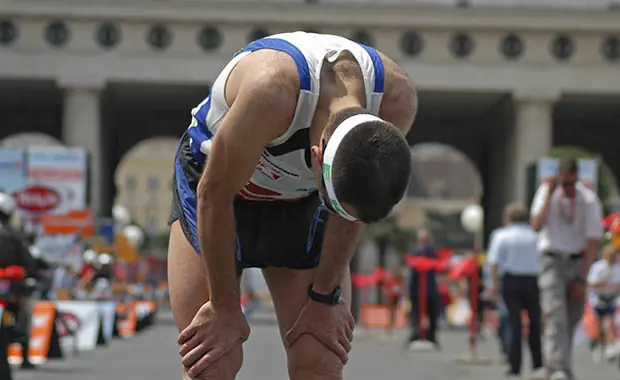
You're feeling fantastic at mile 20 of your marathon, then it happens. Your legs feel as heavy as sequoia tree trunks and your tank is on E. You've hit the dreaded "wall," and you don't think you can continue.
Running Events Near You
Hitting the wall sucks, but there are ways to ensure you don't ever reach that point. And if you find yourself smacking the wall so hard it leaves a mark, one triathlete and coach has discovered a couple of solutions to sidestep the bonk and push through to the finish.
We sat down with Will Murray—a certified USA Triathlon Level I coach and co-author of The Four Pillars of Triathlon: Vital Mental Conditioning for Endurance Athletes—to learn more about the mental and physical aspects of losing steam during a run.
How to Avoid "The Wall"
The first thing to know about hitting the wall is the way your body and brain work together to deal with such a situation. The brain uses 30 percent of the body's glucose storages to perform daily functions and process your thoughts. When you're glucose-deprived during a run, your brain is the first to go due to the lack of the glucose it needs to operate correctly. This causes a loss of cognitive functioning, including your courage and ability to strategize—as in strategizing your way past the pain. Even if your body has the physical capability to keep going, your brain tells you differently.
To avoid low glucose levels during a run, Murray stresses the importance of fueling up pre-run with foods high in sodium (pretzels, soup and pre-packaged meats), potassium (bananas, leafy greens and avocados) and glucose (dried and fresh fruit, whole grain bread and cereal, potatoes and legumes). Energy chews and gels—such as GU, Clif and PowerBar products—are fantastic options for keeping your nutrition levels high during strenuous runs and workouts.



